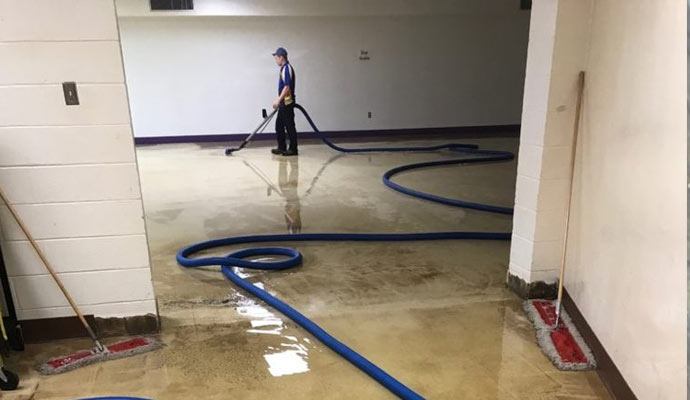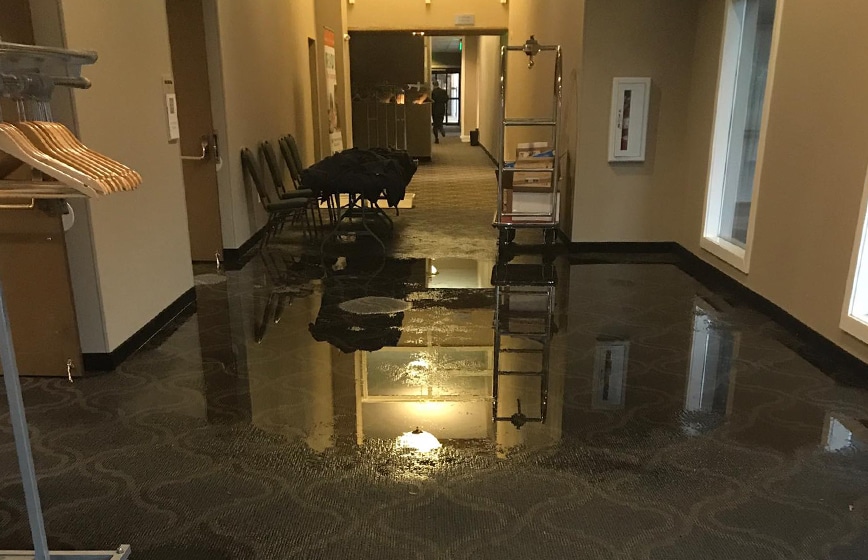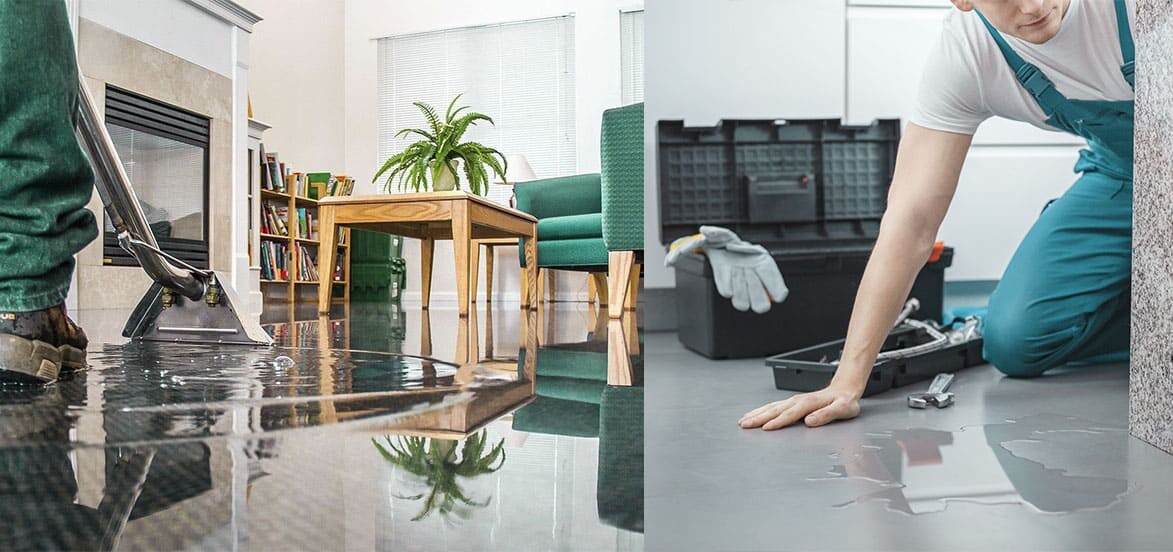Why fast response times dramatically improve Water Damage Restoration outcomes
Water Damage Restoration 101: Understanding the Process and Price
Water damage can strike suddenly, leaving home owners in a state of complication. Understanding the remediation procedure is important for effective healing. From assessing the damage to selecting the right solution provider, each action affects the overall result and price. Aspects such as the type of water damage and urgency additionally play a significant duty. What are the particular strategies used in repair, and exactly how can one get ready for possible costs?
Kinds of Water Damage

Initial Evaluation and Inspection

Water Removal Strategies
Complying with the preliminary analysis, efficient water extraction strategies are employed to mitigate damage and avoid more problems. These strategies include the usage of specific equipment such as completely submersible pumps and industrial-grade vacuum cleaners - Water Damage Restoration. The choice of approach depends on the volume of water present and the sort of materials influenced. For standing water, submersible pumps are typically made use of for rapid removal, while vacuum cleaners are excellent for extracting water from carpets and upholstery. Furthermore, advanced techniques like water extraction floor coverings might be utilized for hard-to-reach areas - Water Damage Restoration. The goal is to get rid of as much water as feasible, decreasing the potential for mold development and structural damage. Trigger and effective water removal is crucial in the total water damage reconstruction process
Drying and Dehumidification Process
Once the water extraction is complete, the drying out and dehumidification process comes to be crucial to recovering the damaged area. This phase commonly employs industrial-grade dehumidifiers and air movers to properly reduce moisture degrees. The dehumidifiers draw in damp air, getting rid of excess moisture, while air moving companies distribute air to speed up evaporation. Tracking equipment is often utilized to track moisture and temperature level levels, making certain ideal drying problems. The duration of this process can differ depending on the degree of the water damage and environmental factors. It is vital to extensively completely dry all influenced materials, including wall surfaces, floor covering, and furnishings, to stop mold growth and architectural why not find out more damage. Correct implementation of this action is important for a successful reconstruction result.
Cleaning and Disinfecting Afflicted Locations
Once the drying out process is full, a comprehensive preliminary analysis and assessment of influenced locations is essential to recognize contamination degrees. Efficient cleansing methods and proper products must then be employed to get rid of debris and spots. Sanitization and sanitation methods are essential to assure that damaging pathogens are removed, recovering the space to a secure problem.
Initial Evaluation and Examination
Before starting any type of restoration initiatives, a comprehensive preliminary evaluation and assessment of the impacted areas are crucial for reliable cleansing and sanitizing. This process entails identifying the level of water damage, figuring out the source of the water invasion, and examining the materials impacted. Inspectors commonly try to find indicators of mold and mildew growth, architectural honesty issues, and damaged items. The evaluation also consists of inspecting wetness levels using specialized equipment to ensure no covert water pockets remain, as these can bring about further issues. Documenting the searchings for is essential for planning the next action in the restoration procedure. A detailed first evaluation makes it possible for reconstruction professionals to design a targeted approach for efficient cleaning and sterilizing, eventually decreasing damage and health and wellness threats.
Cleaning Methods and Products
Effective cleaning and disinfecting of water-damaged locations require a variety of techniques and products tailored to the details products influenced. For permeable surfaces like drywall and carpets, removal approaches are necessary to remove excess moisture, followed by deep cleansing with specialized detergents. Non-porous materials such as tile or metal can be cleansed making use of commercial-grade cleansers that properly eliminate impurities. Heavy steam cleaning is an additional effective method, specifically for carpets and furniture, as it utilizes high temperature levels to get rid of microorganisms and mold and mildew (Flood Cleanup Services). Additionally, environment-friendly items are increasingly preferred for their security and efficiency - Water Damage Restoration. Inevitably, selecting the ideal cleansing methods and items not only guarantees prompt sanitation yet also aids in protecting against more damage and carcinogen connected with water breach
Sanitization and Disinfection Techniques
When dealing with water damage, appropriate sanitization and sanitation methods are vital to ensure the safety and security and health of the damaged environment. After preliminary cleaning, surfaces need to be treated with proper anti-bacterials to get rid of pathogens, mold, and bacteria that flourish in wet problems. Common methods include the usage of EPA-approved chemical anti-bacterials, which can be applied with splashing or cleaning techniques. In addition, ultraviolet (UV) light systems can efficiently disinfect areas by counteracting bacteria without severe chemicals. The selection of technique usually depends on the sort of products impacted and the extent of contamination. Eventually, complete sanitization not only brings back a risk-free space yet additionally helps prevent future health threats connected with sticking around wetness and mold and mildew development.

Repair Work and Restoration Options
Examining the damage brought on by water direct exposure is essential for determining the appropriate repair work and remediation alternatives. Home owners might face various issues, consisting of harmed drywall, deformed floor covering, and jeopardized structural elements. Depending upon the level of the damage, repairs might involve changing sections of drywall, installing new floor covering, or reinforcing structural light beams. In instances of extreme damage, total replacement of damaged products could be needed. Additionally, specialist restorers usually advise using wetness meters to examine hidden moisture degrees before picking the most effective strategy. It is important to act immediately to stop mold growth and more wear and tear. Choosing the appropriate choices not just brings back the property however likewise assures lasting safety and security and performance.
Elements Affecting Restoration Prices

The level of water damage straight impacts the repair sets you back home owners can anticipate to sustain. Variables such as the resource of the water, the period of exposure, and the affected materials substantially influence prices. Tidy water damage from a busted pipe is typically less costly to recover contrasted to damage created by sewage. Additionally, the level of contamination determines the demand for specialized cleansing and disposal solutions, even more boosting costs. Geographical place additionally contributes, as regional labor rates and availability of repair solutions can vary. Ultimately, the urgency of the reaction affects prices; quicker treatments commonly lead to reduce total expenditures by preventing further damage. Comprehending these aspects is important for property owners when estimating restoration expenses.
The three key kinds of water damage are classified based on contamination degrees: tidy water, grey water, and black water. A complete initial assessment and evaluation are important actions in the water damage repair process. For standing water, completely submersible pumps are commonly used for quick removal, while vacuum cleaners are optimal for removing water from carpetings and upholstery. The degree of water damage straight affects the repair costs homeowners can expect to sustain. Clean water damage from a broken pipe is normally much less expensive to recover compared to damage caused by sewer.